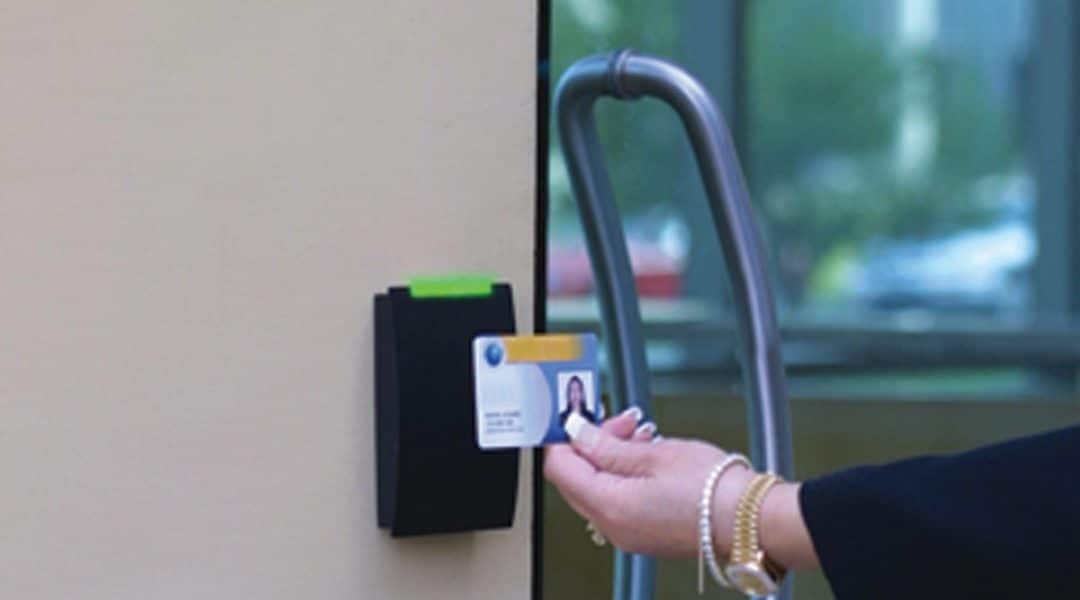By Keith Shaver
Access control – the term used to describe a security system that manages entry into a facility.
For churches, access control is becoming an increasingly important security tool, as it allows the church to manage a person’s entry by using programmed schedules to control access to perimeter doors and specific areas of the church.
The system allows mass opening and closing (securing) of doors on a daily or other periodical schedule and eliminates the key-management issues common to churches, as many times keys are shared and duplicated.
The manual task of unlocking and relocking doors daily or weekly is eliminated by the use of the access control system with a programmed schedule for automatic operation of the locks.
A winter storm day, vacation or holiday schedule could pose an issue if the church is waiting on someone with keys to show up, but it is simple with access control.
The doors can be opened or secured remotely without staff driving to the church. The access control system is managed by mobile phones or tablets, which prevents the need for staff to be present to open or to secure the facility after hours.
Other issues arise when staff requires flexible work and service hours or if your community outreach programs result in a need for after-hours access to the building. Access control allows scheduled programming to provide flexible hours to the staff, members and community weekly or monthly scheduled functions.
Finally, there is a growing need for additional security protection of access control in sensitive areas of your church, such as administration offices, cash counting rooms, restricted access for children and nursery areas, A/V and computer server rooms. All of these areas can be managed with programmed access control.
Access control is one layer of a total security infrastructure and is a key element to ensure overall safety.
The individual components that comprise an access control system include electronic lock hardware mounted on the external doors and door mullions. These can also be added to some interior doors, providing a second interior layer of security.
With a card reader mounted near the door, the user presents a badge or key-fob to gain access to a door.
The door controller is typically mounted in the equipment closet with communication wiring connecting the controller to the reader. The controller handles the interface between the reader and the software programmed schedule.
An access control box or software program runs on a computer in the church office. That box or computer with all the programming capability is connected to the controller using Internet protocol or IP. The system operation is defined by the access control box or software, and the schedules are communicated directly to the controller.
When a card is presented to the reader, the reader communicates the card number to the controller, and, by reviewing the programmed schedules, the controller determines if permission is granted to the card holder.
If granted, the controller, through the reader, energizes the electronic door strike, which allows the door to be opened. The access control can also be integrated with the burglar alarm system to arm or disarm the system upon card or key-fob presentation and can be further linked with the video system to control video recording.
In addition to the access control components, there are fully integrated access control solutions that enable event linkages and sharing of information to trigger actions such as alarms, video recording quality, locking of doors or to interact with persons in the building.
Along with the video monitoring of the cameras, the integrated system’s features include perimeter and interior door access control, intrusion alarm system management and analytics. These analytics can include various audio analytics such as car alarm, glass break detection, aggressive speech, and gunshot detection.
Various motion analytics are possible with people count/direction, loitering, object moved/taken, as well as higher level analytics such as facial recognition and license plate capture/recognition.
The integrated access control provides video documentation of unauthorized attempts to gain access to the facility or into restricted areas, which may then be turned over to law enforcement.
Integration with the intrusion alarm system allows for a coordinated link between the video and access control for central management and reporting of activities.
Access control – once considered a security luxury – is now an essential tool to ensure the safety and security of the church building, staff and members.
Access control may be a single door, or tens to even hundreds of doors defining a fully integrated security system with analytics and linkages to other security components – but it is a requirement.
Keith Shaver is the vice president of sales with Advanced Technology Video. ATV, now partnered with Next Level Security Systems, provides a unified solution integrating video, access control, intrusion and analytics system with browser-based operation, www.atvideo.com.











